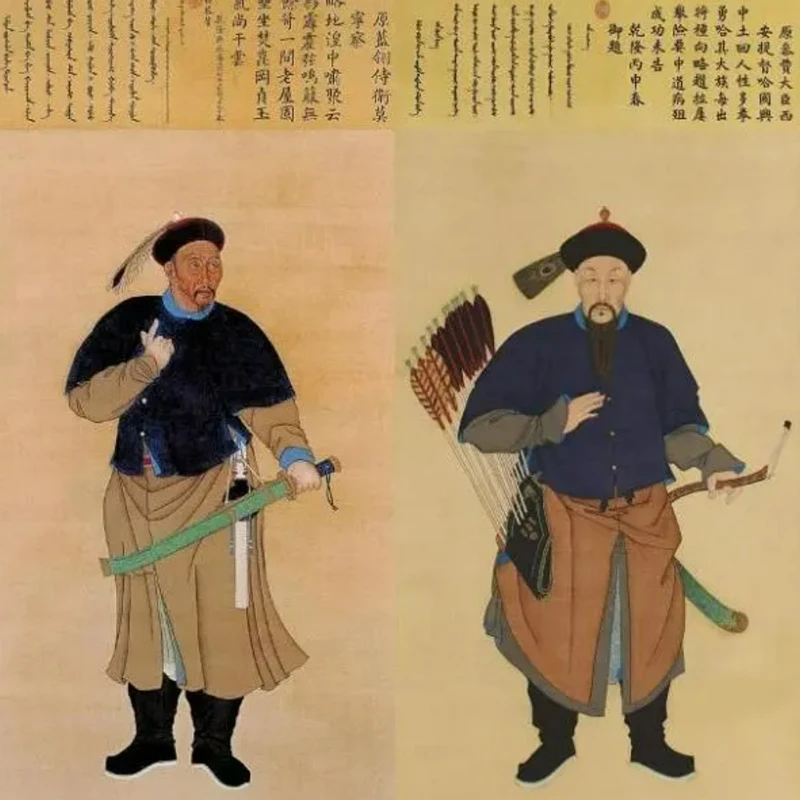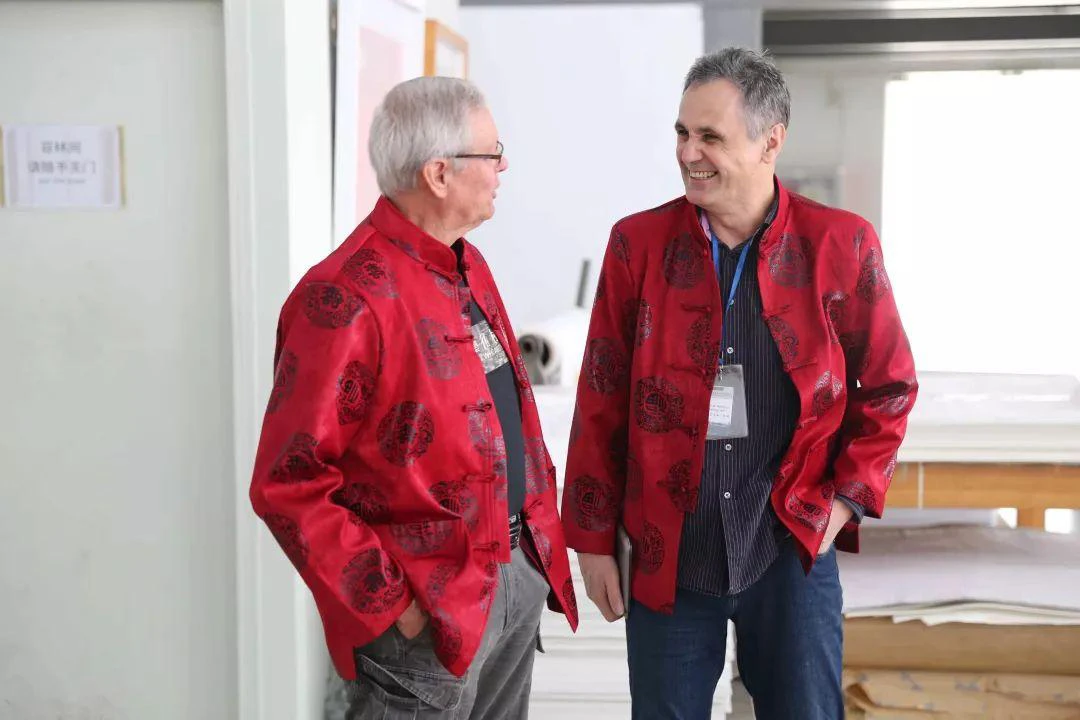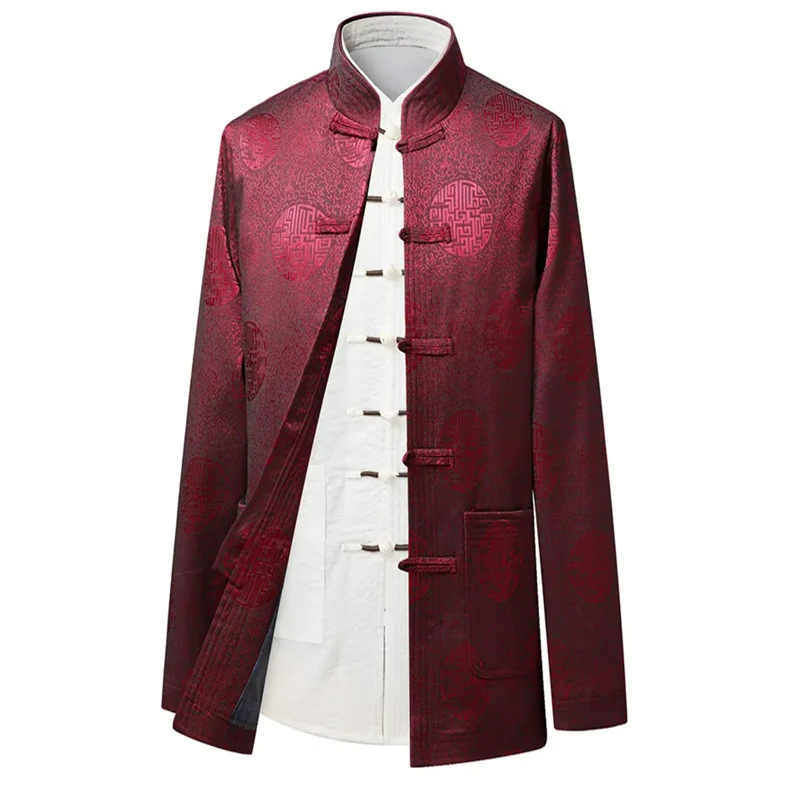As the Chinese New Year approaches, the festive atmosphere fills the air wherever Chinese people reside. Red couplets, fu characters, firecrackers, and lanterns adorn the streets and homes, with the auspicious and joyous Chinese red remaining a timeless favorite. At some point, a type of jacket that combines traditional Chinese clothing with Western-style three-dimensional tailoring, known as the Tang suit, has taken center stage during the celebrations. It has gradually become the go-to choice for various Chinese-style, retro, and ethnic-inspired fashion scenes.
The origin of the term “Tang suit” is closely related to the Tang Dynasty, a period highly praised throughout history. The word “Tang” became a synonym for China among foreign countries, and the habit of using “Tang suit” to refer to “Chinese-style clothing” is also associated with overseas Chinese, mainly denoting the “Chinese-style clothing” recognized by foreigners or generally referring to the attire of Chinese people.
The first strong wave of “Tang suit style” in China originated from the 2001 APEC Leaders’ Informal Meeting held in Shanghai. Three months later, during the Spring Festival, a Tang suit trend in bold red and royal blue swept across the country.
The fashion industry has previously summarized the structural features of Tang suits: “The Tang suit evolved from the Magua (riding jacket) of the Qing Dynasty, with four main characteristics: first, a standing collar with a front center opening; second, connected sleeves, meaning the sleeves and the garment are cut as one piece, primarily using flat tailoring; third, a front closure that can be straight or diagonal; and fourth, right-angled buttons, also known as knotted buttons, consisting of a knot and a loop.”

So, what are the historical origins of the modern Tang suit? Manchu clothing during the Qing Dynasty can be primarily divided into several categories according to the occasion: ceremonial attire, riding attire, and everyday clothing. Among these, the riding attire, directly derived from the Manchu’s hunting lifestyle beyond the Great Wall, is the most representative of the horseback riding and archery elements.
The Magua (olbo), a component of the complete riding attire set that also includes a hat, robe, and trousers, is the prototype of the modern Tang suit. The basic style of the Magua, which originated as military uniform, features a round collar, front closure, and flat sleeves that reach the elbows, with the garment length reaching the navel. The front closure has five buttons, and the materials vary, including single-layer, lined, leather, cotton, and more.
As the Magua gained popularity among the common people, it gradually evolved into styles with pipa-shaped collars and large lapels, and the lengths of the sleeves and the garment itself also changed. The Magua worn by commoners had narrower sleeve openings and extended to the waist, often referred to as “Wolong Dai” (Crouching Dragon Pouch) or “Elundai,” “Elingdai,” and other names.
During the Republic of China era, the long robe and Magua were listed as one of the regular formal attires for men, with blue long robes and black Magua gradually becoming the national formal dress. This is likely the direct origin of the recent promotion of Tang suits as a new era “national costume.”
The modern Tang suit, while retaining some traditional elements, has undergone significant changes to cater to contemporary aesthetics and practicality. The collar has become more versatile, with options ranging from the classic standing collar to mandarin and even Western-style collars. The sleeves have also been adapted, with some designs featuring shorter sleeves or even sleeveless styles for a more casual look.
One of the most notable changes in the modern Tang suit is the use of a wider variety of fabrics. While traditional Magua were typically made from silk, cotton, or leather, today’s Tang suits incorporate a diverse range of materials, including linen, wool, and even synthetic blends. This allows for greater comfort, durability, and ease of care, making the Tang suit more accessible and wearable for everyday occasions.
The color palette of the modern Tang suit has also expanded beyond the traditional red, blue, and black. Designers now experiment with a spectrum of colors, from pastel hues to bold, eye-catching shades, to suit different preferences and occasions. This versatility has contributed to the Tang suit’s growing popularity among younger generations, who appreciate its ability to blend tradition with modern fashion sensibilities.
In recent years, the Tang suit has also gained recognition on the international fashion scene. Renowned Chinese designers have showcased their Tang suit-inspired collections at major fashion events, such as New York Fashion Week and Paris Fashion Week. These modern interpretations often feature innovative cuts, unconventional materials, and intricate embellishments, elevating the Tang suit from a traditional garment to a fashion-forward statement piece.
The rise of the Tang suit on the global stage has not only promoted Chinese culture and fashion but has also sparked a renewed interest in traditional Chinese clothing among the Chinese people themselves. Many now view the Tang suit as a way to express their cultural identity and pride, wearing it not only during festive occasions but also as a fashionable choice for daily wear.
As the Tang suit continues to evolve and adapt to modern times, it serves as a testament to the enduring legacy of Chinese fashion and its ability to transcend time and cultural boundaries. By embracing both its rich history and contemporary innovations, the Tang suit has become a symbol of Chinese cultural heritage and a trendsetting icon in the world of fashion.
In conclusion, the Tang suit’s journey from its origins in the Qing Dynasty’s Magua to its current status as a beloved and fashionable garment is a fascinating story of cultural evolution and adaptation. As we celebrate the Chinese New Year and other festive occasions, donning a Tang suit not only allows us to partake in the joyous atmosphere but also serves as a reminder of the rich history and cultural significance behind this iconic piece of clothing.
As the Tang suit continues to evolve and gain popularity, both in China and abroad, it is clear that this timeless garment will remain an integral part of Chinese fashion and cultural identity for generations to come.


